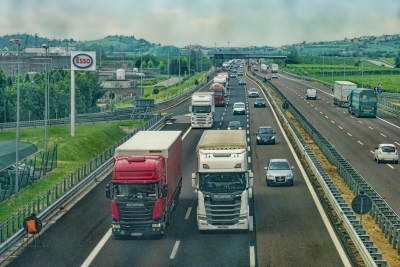
The European Commission has put forth a proposal to regulate carbon emissions from heavy-duty vehicles for the first time.
The plan, released last week, confirms a target of reducing emissions in the sector by 30 percent by 2030.
Despite contributing 6 percent of all the European Union’s carbon emissions, lorries, coaches and buses are currently unregulated across the bloc.
This is damaging to the EU’s stated aim of reducing all emissions by 40 percent by 2030 (on 1990 levels) covering all sectors; a target created so it remains in line with the goals of the Paris climate agreement.
What’s more, the Commission estimates emissions from the heavy duty sector to grow by about 9 percent over the next decade if left unchecked.
Increasing fuel efficiency is also seen as an important emerging market where Europe needs to maintain its competitiveness. The initial proposal will include incentives for new zero and low-emission vehicles in the form of a “super credits system”.
Reducing emissions from the sector will also help to improve air quality across Europe as heavy-duty vehicles produce large quantities of nitrogen oxides and particulate matter, along with carbon dioxide.
Europe’s trade body for the automobile sector, ACEA, acknowledged the need to decarbonise road transport, but said the new targets were “far too aggressive”.
“It would seem as though the Commission has simply taken the exact CO2 reduction levels it already proposed for cars and vans, and applied them directly to heavy-duty vehicles, without fully recognising the fundamental differences between these vehicle segments,” said ACEA Secretary General, Erik Jonnaert
The move comes at a time in which the US Government has put forward opposite plans to downgrade fuel efficiency standards. The Environmental Protection Agency made the announcement last month, stating the previous Obama administration was wrong to set standards that were “too high”.
